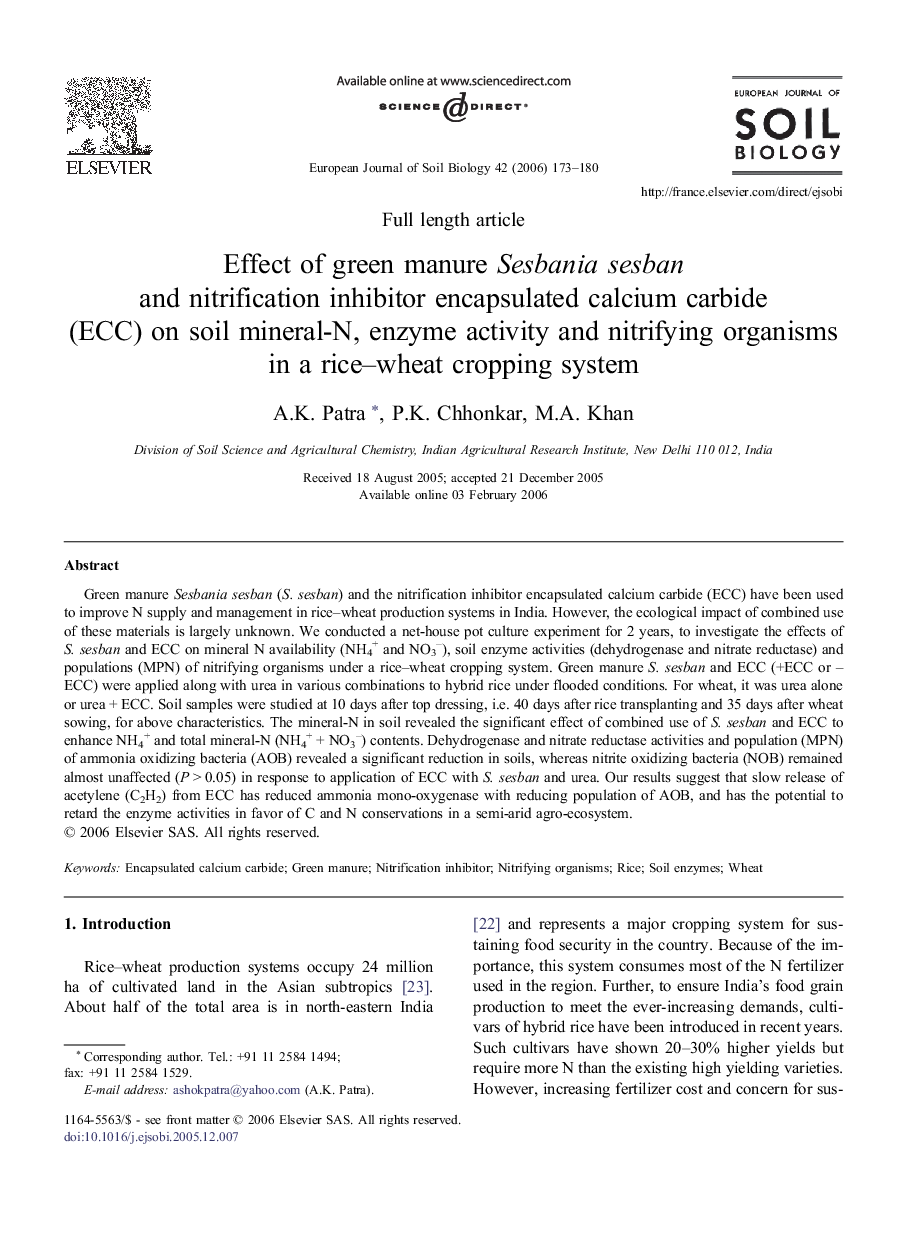| Article ID | Journal | Published Year | Pages | File Type |
|---|---|---|---|---|
| 4392569 | European Journal of Soil Biology | 2006 | 8 Pages |
Green manure Sesbania sesban (S. sesban) and the nitrification inhibitor encapsulated calcium carbide (ECC) have been used to improve N supply and management in rice–wheat production systems in India. However, the ecological impact of combined use of these materials is largely unknown. We conducted a net-house pot culture experiment for 2 years, to investigate the effects of S. sesban and ECC on mineral N availability (NH4+ and NO3–), soil enzyme activities (dehydrogenase and nitrate reductase) and populations (MPN) of nitrifying organisms under a rice–wheat cropping system. Green manure S. sesban and ECC (+ECC or –ECC) were applied along with urea in various combinations to hybrid rice under flooded conditions. For wheat, it was urea alone or urea + ECC. Soil samples were studied at 10 days after top dressing, i.e. 40 days after rice transplanting and 35 days after wheat sowing, for above characteristics. The mineral-N in soil revealed the significant effect of combined use of S. sesban and ECC to enhance NH4+ and total mineral-N (NH4+ + NO3–) contents. Dehydrogenase and nitrate reductase activities and population (MPN) of ammonia oxidizing bacteria (AOB) revealed a significant reduction in soils, whereas nitrite oxidizing bacteria (NOB) remained almost unaffected (P > 0.05) in response to application of ECC with S. sesban and urea. Our results suggest that slow release of acetylene (C2H2) from ECC has reduced ammonia mono-oxygenase with reducing population of AOB, and has the potential to retard the enzyme activities in favor of C and N conservations in a semi-arid agro-ecosystem.
